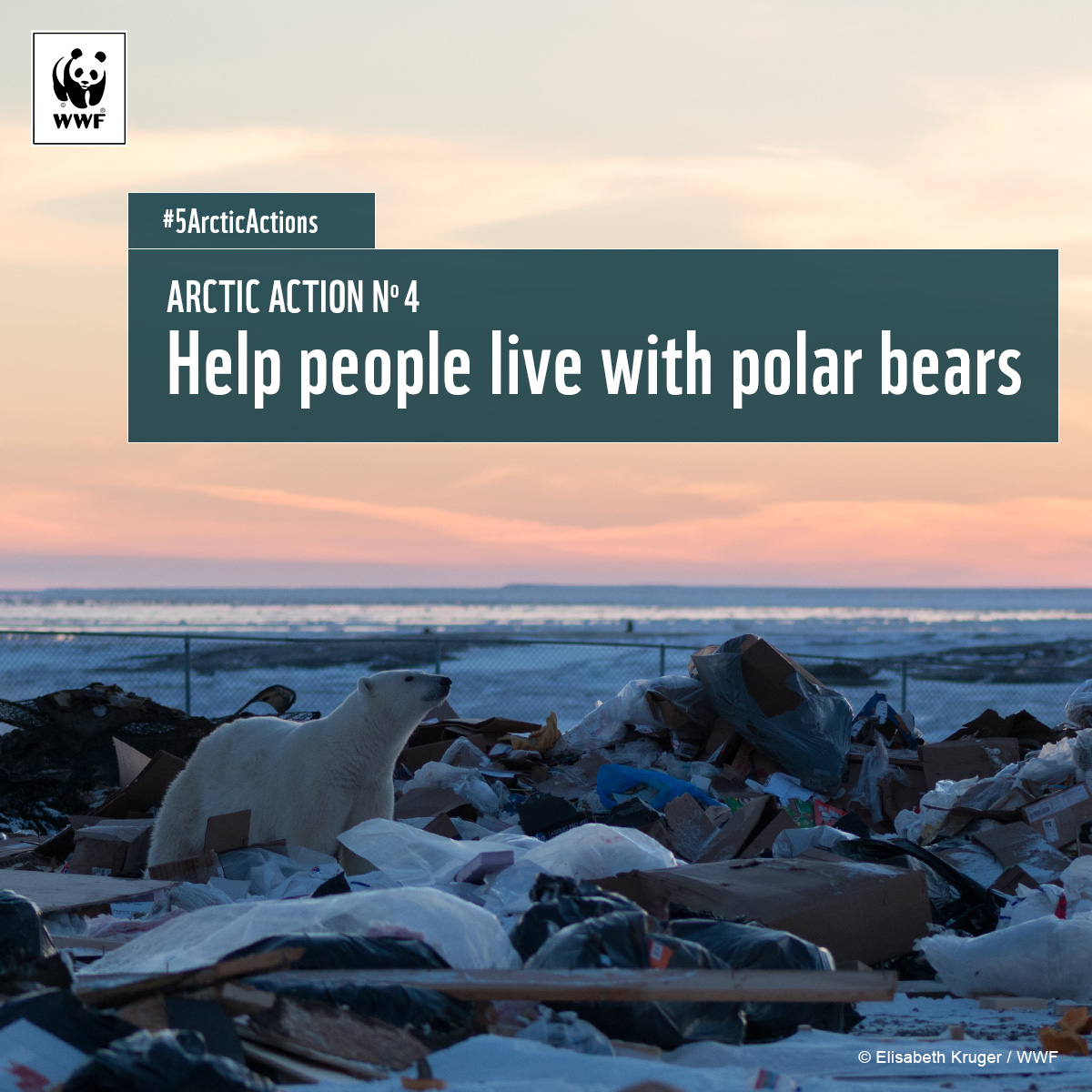This week, Arctic governments are meeting in Norway to talk about Arctic biodiversity. But they need to do more than talk. They’ve invested in reams of excellent research on life in the Arctic – now they need to act! They’ll make commitments this April, when the United States begins its chairmanship of the Arctic Council. Will they commit to Arctic action? This week, we look at #5ArcticActions nations can take to protect Arctic life:

WWF’s Femke Koopmans is a specialist in human/polar bear conflict.
On December 4, 2013, representatives of all five polar bear range states pledged to take major steps to safeguard polar bears. Their declaration at the International Polar Bear Forum included a promise to reduce conflict between people and polar bears. A year later, there’s still a great deal of work to be done.
Why do we need to address conflict between people and polar bears now?
Human-polar bear conflicts is increasing in many parts of the Arctic as the bears lose their sea ice habitat. It’s not just a conservation concern (that is, bears getting killed in conflict), but also a social issue. People living and working in the Arctic share their communities with polar bears, which means that they risk losing sled dogs or stored food, getting injured or even being killed when interacting with bears. It is very important to prevent this from happening and to provide them with resources to interact with bears safely.
Why do Arctic states need to improve on conflict issues?
The Arctic states are responsible for what happens in their Arctic backyard. This includes the safety of its inhabitants; both people and wildlife. There are initiatives at local and international scale to prevent human-polar bear conflicts, but strong support at the national level is needed to support local conflict projects, and to share knowledge between communities. Countries should also ensure that international strategies on human-polar bear conflict are implemented on the national level.
How one community in Russia’s Arctic is keeping bears and people safe
What action can Arctic states take in the next year?
If there’s no national strategy to reduce human/polar bear conflict, develop one – and ensure there’s sufficient funding.
Arctic states can also get better at sharing information on conflict with each other. There’s a new database of polar bear /human interaction – the more data countries can draw from, the better they can prevent and mitigate conflict. Countries should commit to adding their conflict information to the database.
Is there anything the public can do?
If you’re visiting the Arctic, learn about polar bear behaviour and how to prevent conflict.
If you’re outside the Arctic, support a move to renewable energy. Human-polar bear conflict is one of the many results of climate change. Changes in sea ice mean polar bears spend more on shore – and interact with people more often.
